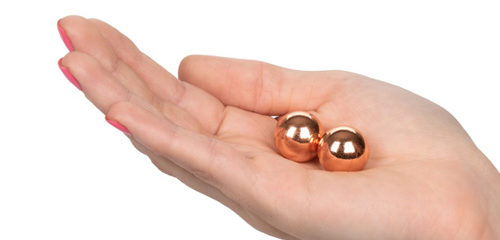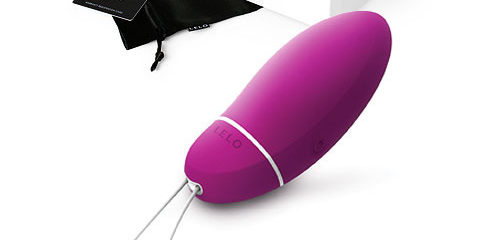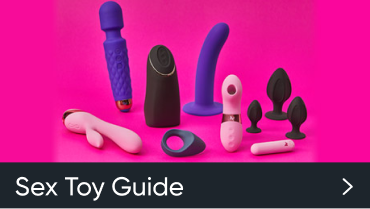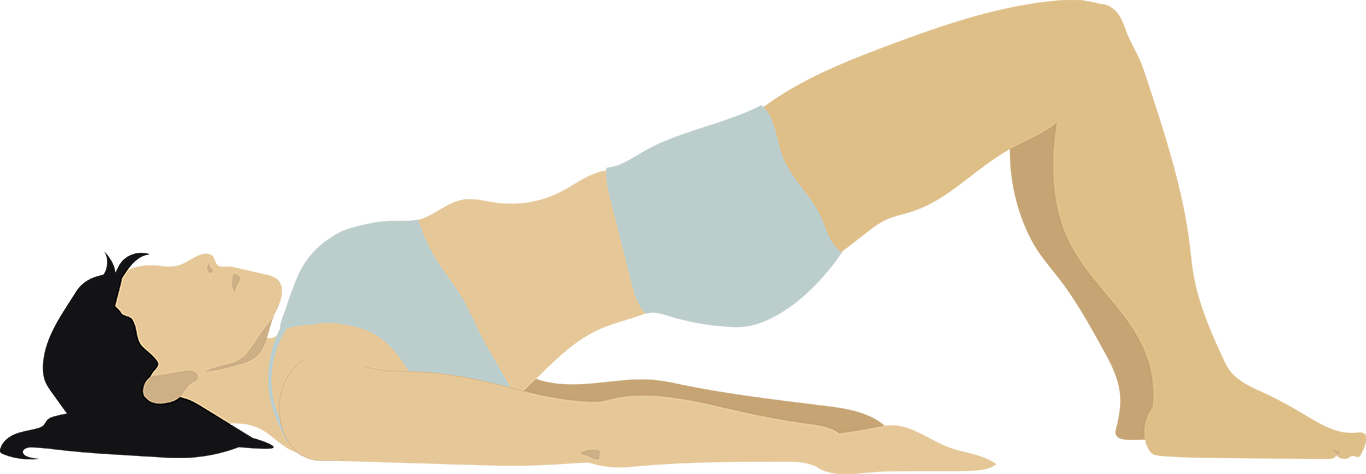If you’ve ever felt that tell-tale trickle in your undies when you’ve sneezed a little too hard, laughed a little too boisterously, or vomited a little too violently (hey, we’ve all been there), then kegel exercises could be for you.
Kegel exercises, also known as pelvic floor exercises, can help strengthen your pelvic muscles – i.e. the muscles that support your bladder, bowel, uterus and vagina.
There are a huge number of factors that can weaken your pelvic floor muscles, like pregnancy, childbirth, surgery, and even natural ageing, so it’s no wonder that more and more people are looking to kegel exercises to help them restore strength. And with a huge number of benefits – from better control of your bladder to better sex – we think it’s worth putting in a little extra effort to tend to this oft-neglected part of the body.
Think your pelvic floor could use a workout? Well, you’ve come to the right place. So put down that magazine, take a break from Netflix, and give your pelvic floor some love!
But firstly, what are kegels?
For the uninitiated, kegel exercises might sound like something out of a medieval torture manual. But don’t worry – they’re nothing nearly that nefarious! In fact, kegels are one of the simplest and most effective ways to improve your overall health.
Named after German gynaecologist Arnold Kegel, these exercises are designed to strengthen the pelvic floor muscles. This group of muscles sit between the tailbone and the pubic bone within your pelvis, supporting the bladder, bowel and uterus. These muscles are instrumental in controlling urine flow.
Strengthening these muscles can lead to better bladder control, reduced risk of incontinence, and it can help you have more intense orgasms. Plus, unlike some other forms of exercise, kegels can be done anywhere and anytime – no gym membership required!
What are the benefits of kegels?
As anyone who has ever given birth can attest, the process of childbirth takes a toll on the body. In addition to the strain on the back and abdominal muscles, the pelvic floor muscles can also be damaged during delivery. This can lead to incontinence, weak orgasms, and other sexual problems.
Kegel exercises are one way to help strengthen the pelvic floor muscles. By repeatedly contracting and relaxing the muscles that control urine flow, you can exercise these muscles and improve their strength.
They’re more commonly thought of as something for women – especially those who have injuries from pregnancy and childbirth – but kegels can help both men and women in a number of ways. Aside from helping to relieve incontinence and reduce the risk of prolapses, kegel exercises can help you achieve much better orgasms. Among other things.
So…do kegels help with sex?
Yes, they do! Kegels can help improve your sex life in many different ways.
Firstly, they will help improve the circulation of blood in your pelvic floor and genitals. This helps with arousal, helps people with vulvas enjoy penetrative sex and can improve lubrication.
Kegel exercises also let a receptive partner contract more strongly during sex. This is true of both vaginal and anal sex, and this can improve sex for both the receptive and penetrating partner.
Who should do kegel exercises?
Kegel exercise for women
There’s no doubt that kegels offer plenty of benefits for people with vulvas. They can help to strengthen the pelvic floor muscles, reduce incontinence and the risk of prolapse, improve sexual function by increasing blood flow to the genitals, and make orgasms more intense.
After childbirth, a lot of people feel like they’re not as ‘tight’ down there anymore. It should be noted that this is a huge (and often sexist) misconception – you don’t get ‘loose’ after giving birth. In fact, if anything, you’re tighter – your pelvic floor muscles elongate during birth and then tighten post-birth in response.
But if you’d like to do something to calm your mind, kegel exercises are a pretty good option. They have health and wellness benefits beyond the psychological and can enhance your sexual experiences when you’re ready to bounce back. And if they help you feel more confident about yourself and your body, that’s a great way to help yourself feel sexier and ready to go!
Just remember – sex should never be painful. If you’re looking at this because of childbirth, there are heaps of reasons why you may not want to bounce back into sex immediately, and many of them have nothing to do with your pelvic floor. No one should be pressuring you to get back into sex post-birth. You need to be ready, and what ‘ready’ means is entirely up to you.
Kegel exercises for men
For people with penises, the most lauded sexual benefit from kegel exercises are orgasm control. Basically, they can help you last longer, control the timing of your orgasm, and can ramp up the intensity of your orgasms. By strengthening the muscles that control ejaculation, you can train your body to have more control over when and how you cum.
If receptive anal sex is part of your play, kegels will also help you heighten your own pleasure, helping you get more pressure on your prostate, and enhance the experience of your penetrating partner.
On the more medical side, kegels can also help prevent urinary incontinence and treat erectile dysfunction.
Basically, if there’s anything that you’d like to improve about your sexual performance or bladder control, doing kegel exercises is a good place to start!
How to: kegel exercises
1. Find your pelvic muscles
First things first, you’ll have to find your pelvic muscles!
Clench your anus – like you’re trying to hold in a fart. People with vulvas may find it useful to pretend you’re tightening your vagina around a tampon. People with penises can go to the toilet and stop your urine flow midstream.
When you do any of these things you should feel your pelvic muscles contracting.
When you’ve found the right muscles working you should feel them contracting more towards the back of your pelvic area, as opposed to the front.
2. Get in position
Start by laying on your back with your feet planted on the ground, and from here you can lift the lower half of your body off the ground. You should start to feel your pelvic floor muscles working in this position. Once you’re used to the feeling of your pelvic floor muscles, you can try different positions like laying flat on your back, standing, or even sitting. The great thing about kegel exercises is you can do them anywhere, any time.
3. Contract for 3 to 5 seconds
So now that you’re in position, it’s time to get to work!
Start by contracting your pelvic floor muscles for about 3 to 5 seconds, and then relax them for 5 more seconds. Just like you did when trying to find the muscles – just pretend you’re holding in a fart, tightening your vagina around a tampon, or stopping your stream mid-pee (depending on the parts you’re working with).
You can repeat this cycle of contracting and relaxing about 10 times per day to start off.
Our top tips for getting the most out of your kegel exercises
- Keep your other muscles relaxed as much as you can. Try not to contract your abs, legs, or butt muscles when you’re performing these exercises. If you find you keep tensing in other places, place your hand over that area so you can quickly identify that you’re tensing the wrong muscle groups.
- As you get more confident and comfortable with kegels, try to extend the time you contract for. Try to work your way up to 10 seconds of contractions. But make sure you’re also increasing your rest time to match.
- As you begin to strengthen your pelvic floor muscles, you should increase the number of exercises you do per day. Doing at least 30 to 40 ‘reps’ will do wonders for your body. Spreading them out over the day is helpful as well. Because these are quite stealthy exercises, you can do them anywhere! Sitting at your desk at work, on the train, or while you’re waiting for your lunch.
- Make sure you’re keeping your exercises diverse. Make sure you’re practising short 2 to 3-second contractions as well as longer ones. These short-hold exercises are known as ‘quick flicks’.
Kegel exercisers
While you can do kegels with no equipment at all, advancements in the practice mean there’s now a bunch of fun toys and tools to help you along. And many of these toys don’t just help with strengthening – they’re designed to provide pleasure too!
So if you’re looking for an addition to your toy collection (or we guess they could be considered gym equipment), then give one of these a try.
Kegel balls and Ben-Wa balls

Kegel balls and Ben-Wa Balls are great little toys that can be inserted into the vagina during kegel exercises. The balls create a massaging sensation that stimulates you internally as you move. Using these during kegel exercises will help your body grow even stronger around your pelvic floor.
Kegel beads

Kegel beads are similar to Ben-Wa balls, with a slightly varied design. Kegel beads ensure that every person can find their perfect fit for the most effective pelvic floor workout. They offer you the chance to mix and match weights. Each set could include different weights of beads which can be combined in a silicone harness for a more tailored routine. Kegel beads can help the user get longer, stronger, more attainable orgasms and a faster return to tone and tightness after giving birth.
Anal Beads

Anal beads, or anal Ben-Wa balls are connected by a string or similar cord and a handle so they don’t get lost up your rectum. While we know some people do use Ben-Wa balls and Kegel beads anally, we don’t recommend it. If you do buy some anal beads for kegal exercises, be aware that many of the lighter jelly and silicone anal beads are designed to provide fullness and nerve stimulation when inserted and/or removed, so look for something with a bit more weight.
Vibrating kegel exercisers

Vibrating kegel exercisers are usually longer and more phallic in shape than kegel beads and balls. Simply squeeze your kegel muscles around the shaft and train your way to sexual satisfaction and bigger, better orgasms. They will often have different levels of intensity, so you can start slowly and work your way up as you get more comfortable.
Prostate massagers

For people with prostages, a properly shaped prostate massager is an option for kegel exercises. As with any anal related toy play, make sure you’re choosing a product with a properly flared base and using plenty of lube. Prostate massagers come in both still and vibrating forms and in a variety of sizes. Once inserted, squeeze your kegel muscles and try to focus on the exercises…at least until you’re happy to switch over to pleasure.
Egg-inspired kegel exercisers

Similar to vibrating kegel exercisers, egg-inspired exercisers will often vibrate as well. But really, it’s the shape that sets them apart. Egg-inspired kegel exercisers will be shaped (you guessed it!) like an egg. As with the other toys, the egg is inserted into your vagina when you’re practising your kegels. They are not recommended for anal use.
Get ready to kegel!
Now that you’ve successfully completed the kegel crash course, I think it’s time you went out there and tried it for yourself. If you want some assistance in the form of some very fun toys, you can have a look at our kegel exercisers here.













